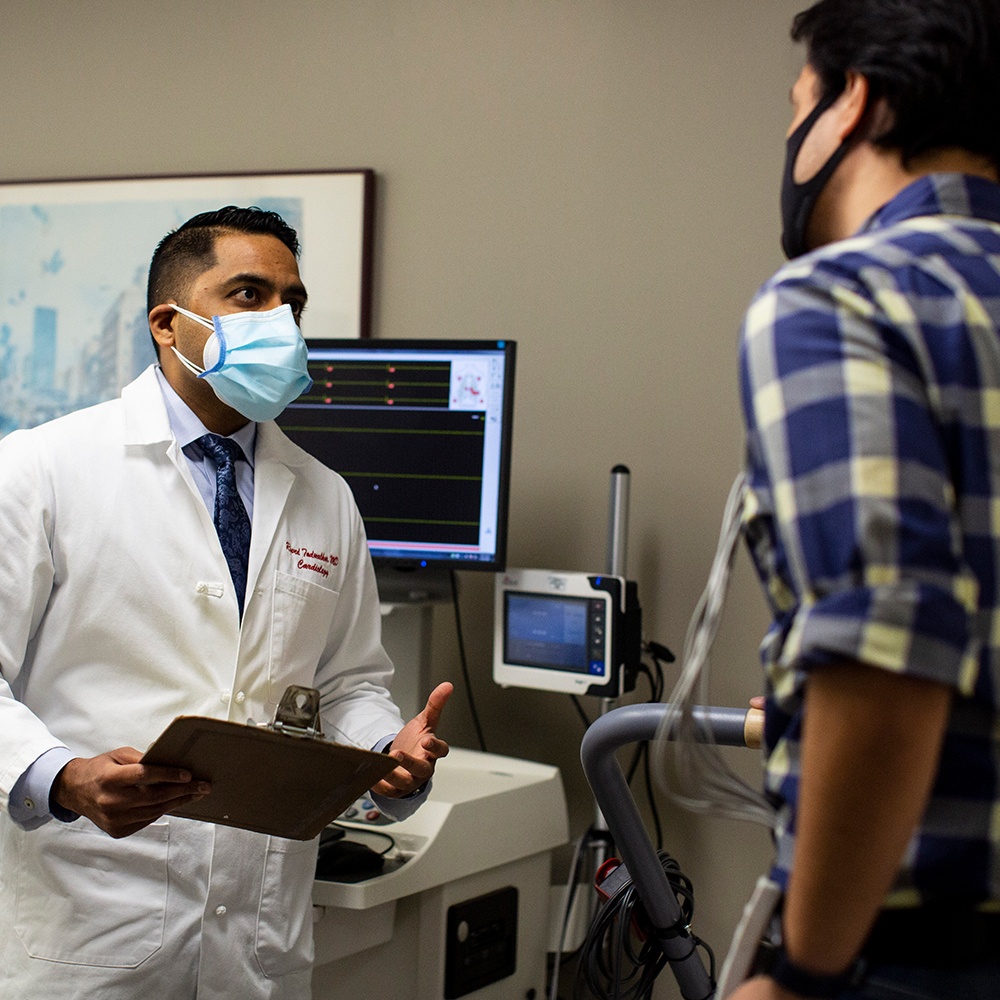Traditional Permanent Pacemaker Implantation

Overview
What is a Traditional Permanent Pacemaker Implantation?
A traditional pacemaker is small device with two parts, a pulse generator and wires (leads), placed under the skin of your chest to help control your heartbeat by sending electrical impulses to maintain a suitable heart rate and rhythm. A traditional pacemaker requires your cardiologist to perform a two-step procedure to thread the wires into your heart, and then cut into your chest wall, to create a surgical pocket for the pulse generator. The pulse generator houses the battery and the circuitry that regulates the electrical impulses. The battery life is between 5 to 15 years. There may be one to three flexible and insulated wires placed in a chamber or chambers of your heart to deliver the electrical impulses.
Your cardiologist may recommend one the following types of pacemakers, depending on your condition:
Single chamber pacemaker
A single chamber pacemaker that carries electrical impulses to the right ventricle of your heart.
Dual chamber pacemaker
A dual chamber pacemaker that carries electrical impulses to the right ventricle and the right atrium.
Biventricular pacemaker
A biventricular pacemaker stimulates the lower chambers of the heart, the right and left ventricles.
Leaderless permanent pacemaker implantation
Your cardiologist may also recommend a leaderless permanent pacemaker implantation if you qualify due to your medical condition.
Why
Why a Traditional Permanent Pacemaker Implantation?
Pacemakers are often recommended by cardiologists to help the heart pump blood more effectively, increase energy levels, and reduce shortness of breath so you can return to everyday activities. Your doctor may recommend you have a traditional permanent pacemaker implantation for the following reasons:
Risks
Traditional Permanent Pacemaker Implantation Potential Risks and Complications
Potential risks or complications to a traditional permanent pacemaker implantation may include:
- Bleeding from the incision site.
- Pain and bruising at the incision site
- Lead breakage.
- Dislodgement of the lead wires.
- Vein blockage or damage.
- Infection
- Failure to deliver the therapy when it’s need or receiving extra therapy when it’s not.

Prep
Preparing for a Traditional Permanent Pacemaker Implantation
Your cardiologist will give you instructions to help you prepare for the procedure and discuss the risks and benefits so you can make an informed decision.
What to Expect
What to Expect During a Traditional Permanent Pacemaker Implantation
During the Procedure
You will be sedated and given a local anesthesia and your cardiac surgeon will make a small incision in your upper chest and guide the lead wire through a vein into your heart. Your surgeon will then connect the lead wire to the pacemaker and programmed before inserting the pacemaker beneath your skin in the upper chest. After testing the device, your surgeon will close the incision. This typically takes a couple hours. You may have a small scar at the incision site and small lump where the device was inserted. It is usually recommended that you stay in the hospital overnight to recover and be monitored to make sure the device is working properly.
After the Procedure
After you’ve healed and your pacemaker is working as expected, you’ll have several follow-up appointments with your cardiologist to make sure the pacemaker settings are correct and to monitor your overall health. Recovery from a traditional pacemaker implantation can take from a few days to a few weeks. You will have mobility restrictions of your upper body until you heal.
There are some precautions to ensure that electrical interference does not affect your pacemaker’s function, including:
- Avoid placing your cell phone directly over the pacemaker when the phone is on.
- Stay away from metal detection systems and be sure to get an ID card that states you have a pacemaker when going through airport security.
- Make sure medical personnel know you have a pacemaker when seeking any medical treatment that may include an MRI or other treatments.
- Do not stand within two feet of welding equipment, high-voltage transformers or motor-generated systems.
When your pacemaker battery runs low, it’s programmed to give you enough lead-time for it to be replaced. You don’t have to worry that your pacemaker will quit on you. Your cardiologist may also be able to monitor your device via telephone or the Internet.
Follow-Up
Be sure to follow your cardiologist’s instructions about taking your medications and keep your appointments for device checks. Let your cardiologist know if you experience any adverse symptoms or have any concerns.
Specialists